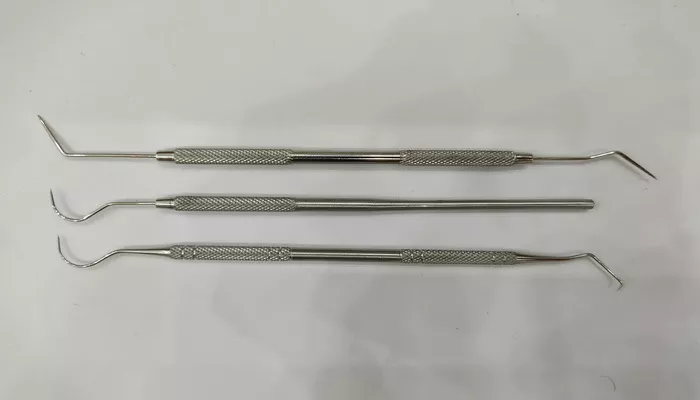Removing orthodontic cement after braces are taken off is a crucial step in ensuring the health and aesthetics of a patient’s teeth. Orthodontic cement, used to bond brackets and bands, can be challenging to remove if not done correctly. Various tools and techniques are available for this task, but understanding which scalers are most effective is essential for dental professionals. This article will explore the types of scalers useful for removing orthodontic cement, their features, and best practices for their use.
The Importance of Proper Cement Removal
After orthodontic treatment, it is vital to remove all residual cement from the teeth. Leftover cement can lead to plaque accumulation, tooth decay, and gum irritation. Proper removal ensures that the teeth are clean and ready for polishing, which enhances the overall appearance and health of the smile.
Types of Scalers Used in Cement Removal
Several types of scalers are commonly used in dental practices to remove orthodontic cement. Each type has its unique benefits and applications.
1. Hand Scalpel
A sharp hand scaler is one of the most commonly used instruments for removing orthodontic cement. This tool allows for precise scraping and picking of cement from the tooth surface.
Usage: When using a hand scaler, it is crucial to maintain a fulcrum and work away from the gingiva to prevent injury. The sharp edge of the scaler can effectively lift and remove cement without damaging the enamel.
Advantages: Hand scalers provide excellent tactile feedback, allowing the dental professional to feel the texture of the cement and the tooth surface. This feedback is essential for ensuring thorough removal without causing harm to the tooth.
see also: What Happens If You Swallow An Orthodontic Rubber Band
2. Ultrasonic Scalers
Ultrasonic scalers, such as the Cavitron, are another effective option for removing orthodontic cement. These devices use high-frequency vibrations to break down and remove calculus and cement from the teeth.
Functionality: The ultrasonic scaler operates by generating vibrations in the ultrasonic range, typically between 20,000 and 45,000 Hz. This rapid oscillation helps to dislodge cement and debris from the tooth surface.
Benefits: Ultrasonic scalers are particularly advantageous because they can cover larger areas quickly and efficiently. They also reduce the physical effort required by the practitioner, making the procedure more comfortable for both the dentist and the patient.
Patient Comfort: The use of water spray during ultrasonic scaling helps to cool the tip and flush away debris, minimizing discomfort and enhancing the patient’s experience.
3. Diamond Burs
Fluted diamond burs are specifically designed for controlled removal of bulk bonding adhesive after brackets have been removed.
Application: These burs can be used with a low-speed handpiece to effectively grind away excess cement without damaging the tooth structure.
Precision: The non-tapered friction grip burs cut quickly and are designed to reach tight areas along the gingiva and occlusal pits. This precision is critical when working around sensitive areas.
4. Cement Remover Instruments
Specialized instruments, such as the Novatech Cement Remover, combine features of scalers and chisels to facilitate the removal of excess resin, cement, or porcelain flash.
Design: These tools often feature a sickle-shaped scaler with a flat blade, making them versatile for different types of cement removal.
The narrow chisel can effectively remove excess interproximal material with a push stroke.
Effectiveness: The design allows for both scraping and pushing motions, providing flexibility in how the cement is approached and removed.
Best Practices for Using Scalers
When removing orthodontic cement, several best practices should be followed to ensure effectiveness and patient safety.
Maintain a Fulcrum: Always establish a fulcrum during the procedure. This technique stabilizes the hand and enhances control over the scaler, reducing the risk of slipping and causing injury.
Work Gently: Use gentle pressure when scraping cement. Excessive force can damage the enamel or irritate the gums. It is essential to be patient and allow the scaler to do the work.
Check for Residual Cement: After the initial removal, carefully inspect the tooth surface for any remaining cement. Using a scaler or explorer, check all surfaces to ensure thorough cleaning.
Polish After Removal: Once the cement is removed, polish the teeth using a rubber prophy cup and polishing paste. This step not only enhances the appearance of the teeth but also helps to smooth any rough areas that may have been created during cement removal.
Educate the Patient: After the procedure, inform the patient about the importance of maintaining good oral hygiene to prevent plaque buildup in the absence of braces. Provide guidance on effective brushing and flossing techniques.
Conclusion
Removing orthodontic cement is a critical step in the orthodontic treatment process.
Various scalers, including hand scalers, ultrasonic scalers, diamond burs, and specialized cement remover instruments, can effectively accomplish this task. Each tool has its benefits, and the choice of scaler may depend on the specific situation and the practitioner’s preference.

